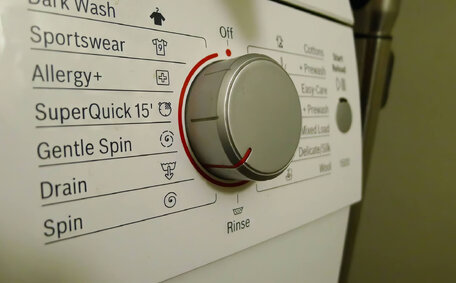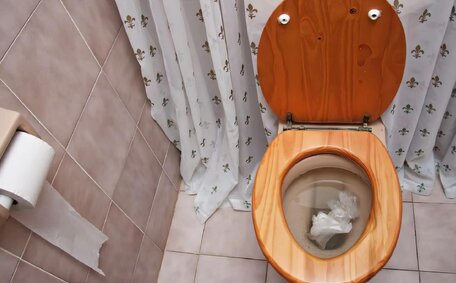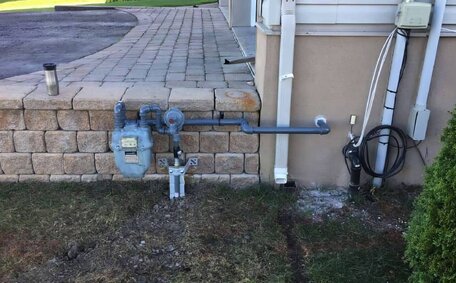What is storm drain relining?
Storm drain relining is a method that refurbishes old and compromised sewer pipes without the need to excavate your drainage system. The resin within the liner is then cured using steam or UV light, effectively forming a new, robust pipe within the existing structure.
The process involves inserting a woven fibreglass tube, saturated with epoxy resin, directly into the damaged pipe.
Relining storm drains using the dig no method provides numerous advantages over traditional pipe replacement. It is a quick and effective repair strategy for damaged pipes that avoids excavating trenches or cutting up concrete, ensuring a no mess, tidy outcome.
Sewer stormwater systems benefit from relining as it permits repairs in challenging areas and renews pipes with diverse shapes, bends, and junctions.
Storm drain relining is versatile enough to accommodate materials like concrete, PVC, ductile iron, and even traditional clay or terracotta pipelines.
The relining creates a seamless epoxy barrier, preventing further water infiltration and enhancing flow rates in your drain pipe.
When should you consider storm drain relining?
There are several signs that indicate storm drain relining should be considered:
- Recurring blocked drain issues or sluggish stormwater sewer flow, even after thorough cleaning attempts
- Noticeable cracks, holes, root intrusion or other damage along your storm drain pipes
- Stormwater sewers ageing beyond 50 years where the risk of corrosion intensifies
- Sections where pipes have settled, misaligned or collapsed
- Leaking joints between pipes causing soil erosion or sinkholes
- When planning construction/landscaping that could involve digging up your landscape to access pipes
- As preventative maintenance when pipes show early signs of wear before total failure
Proactive adoption of pipe relining solutions can prevent catastrophic failures by addressing sewer pipe deterioration early, offering an efficient turnaround. Unlike full replacements, relining avoids trench excavation and delivers a tidy site without substantial restoration costs. It also ensures a minimal disruption to services to restore your stormwater drainage quickly.
Having your drain assessed through the capture of detailed CCTV footage detects issues early. then specific sections can be relined rather than replacing the entire pipe network of your stormwater sewer system. For an informed decision, it’s advisable to consult with an emergency plumbing expert who can analyse CCTV inspection footage and recommend suitable relining solutions.
Types of pipes suitable for storm drain relining
Sewer pipe relining effectively repairs and rejuvenates pipes of various materials, showcasing its versatility as a trenchless solution for diverse applications.
- We utilize state-of-the-art PVC (Polyvinyl Chloride) pipes - one of the most common modern piping products in stormwater drainage systems. Over time, PVC can develop cracks and fractures.
- Concrete - Concrete stormwater pipes are vulnerable to corrosion damage and buildup of mineral deposits leading to drainage issues.
- Clay or Earthenware - Older style clay or terracotta pipes used in some legacy storm drainage systems are prone to cracking. They are also commonly affected by tree root infiltration which disrupts the system.
- Ductile Iron - While very durable, older ductile iron storm pipes still experience corrosion failure, leakage at joints and obstructed drainage capacity.
The seamless epoxy barrier deployed during storm drain relining provides all pipe types with a robust layer that withstands water flow, pressure, and pipe movement without sustaining damage. Storm drain relining is a versatile method compatible with an extensive array of pipe materials and sizes.
Pipe relining solutions can also traverse multiple bends, elbows, junctions and vertical sewer line pipes throughout an entire stormwater network. This allows for repairs even where dig sites for access would be unavailable. For an accurate pipe relining quote, simply call us so our plumbers can assess your stormwater system and determine if relining is the appropriate solution.
The pros and cons of storm drain relining
Our sophisticated pipe relining system offers numerous benefits as a trenchless repair technique, although there are some limitations to be aware of:
Pros:
- Significantly less disruptive as our no-dig approach eschews the mess and hassle of traditional trench-based pipe replacements
- A rapid repair process minimises disruption, allowing normal routines to swiftly resume, typically within 1-2 days.
- Significantly lower costs compared to full pipe replacement
- Can handle bends, elbows and junctions throughout pipe networks
- Resists root intrusion and prevents further pipe corrosion
- Ensures your drains work efficiently by restoring drainage capacity and flow rates
Cons:
- Restricts repairs to pipe sections up to approximately 90 meters in length
- Not suitable for pipes that feature extreme damage or collapses
- necessitates a sizable entry point into the stormwater system
- Not designed to improve flow rates in very old piping
- Long-term durability not proven over 50+ years yet
A professional assessment is recommended to determine if storm drain relining is suitable for your unique situation. While limitations exist, it serves as an effective, minimally invasive repair strategy suitable for many common stormwater pipe issues.
The cost-effectiveness of storm drain relining
Storm drain relining offers substantial long-term cost savings over full pipe replacement. While relining has a moderate upfront expense, it avoids the major restoration and labour costs involved with digging up pipes.
Factors impacting storm drain relining pricing include:
- Type and extent of damage
- Pipe length and diameter
- Number of bends, joints or obstacles
- Accessibility to storm drains and required preparatory work
However, even with complex configurations or widespread deterioration, relining remains a more cost-effective option compared to replacement. It also comes with a long service life matching modern piping standards.
One benefit of our pipe relining service is the ability to target specific damaged sections, negating the need to reline entire networks. This means costs stay proportional to repairs needed now instead of unnecessary preventative replacements.
Contact us for a free quote tailored to the specific condition of your stormwater pipes; Our experts provide precise relining estimates. Utilising our trenchless technology, refurbishing your property’s drainage system could typically cost less than $10,000. We leverage CCTV drainage footage to inform the most effective repair strategy, providing a detailed, obligation-free cost analysis.






